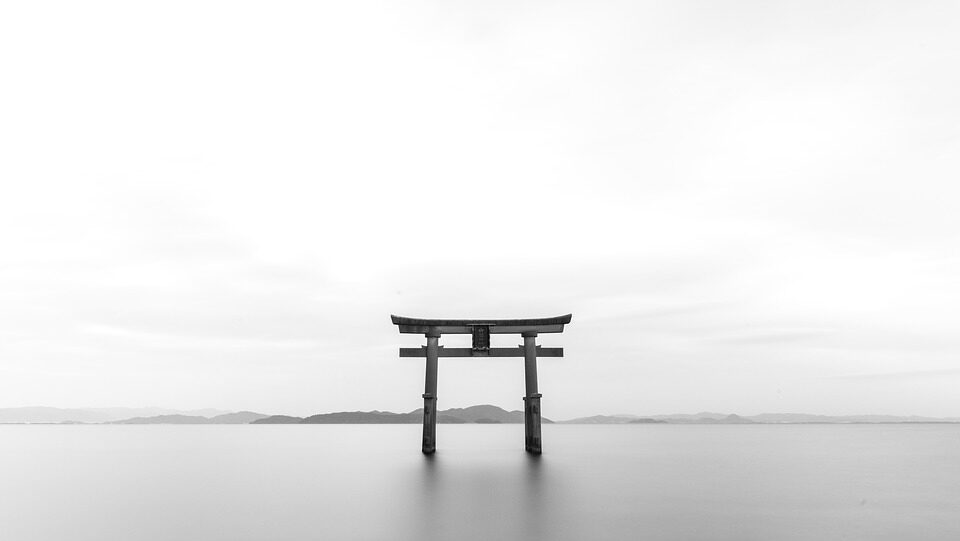【What is Shokasonjuku?】A summary of the private school where Shoin Yoshida taught and produced many great people.
When learning about the history of Japan, one cannot leave out “Shokasonjuku(松下村塾)”.
The “Shokasonjuku” was a school that existed in Hagi City, Yamaguchi Prefecture, around 1856, at the end of the Edo period.
Shoin Yoshida(吉田松陰), the most important thinker in Japanese history, taught there, and many great people were produced from this small private school on the edge of Honshu.
Shinsaku Takasugi, Genzui Kusaka, Hirobumi Ito, Aritomo Yamagata…
It is no exaggeration to say that the foundation of modern Japan was laid by the students of Shokasonjuku.
Why were so many great people born?
This article summarizes what kind of school “Shokasonjuku” is.
Please read it carefully, as Shokasonjuku still offers us much to learn today.
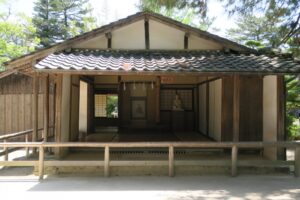
目次
Who is Shoin Yoshida?
Shoin Yoshida(吉田松陰, 1830.9.20-1859.11.21) was a thinker of the late Edo period from the Choshu domain (present-day Yamaguchi Prefecture).
He was adopted by a family of the Yamaga military science (official military science of the Choshu domain) and became a teacher of the Yamaga military science at the Meirinkan(明倫館), the domain school, at the age of only 9.
At the age of 11, he gave a lecture in front of the lord of the domain, and his talent was recognized from an early age.
From the age of 20, he traveled throughout Japan to broaden his knowledge and interacted with various people.
At the end of the Edo period, Perry’s black ships arrived in 1853, and he became acutely aware of the crisis in Japan.
He thought that he needed to know about other countries in order to travel with advanced nations, so he decided to go to the U.S. aboard the black ships.
As a result, he was rejected by the black ships and failed.
He was sent to the Choshu domain as a felon, and after spending time in prison, he was sent to his house.
Unable to leave his house, the young people of the neighborhood gathered around Shoin Yoshida, and this gradually became a school, which became Shokasonjuku, an educational institution.
Some of them, such as Shinsaku Takasugi and Genzui Kusaka, would later go on to make their names in Japan.
Shoin Yoshida, who was concerned about the future of Japan, began to motivate young people instead of himself.
However, he was accused of dangerous ideas and executed at the young age of 29 due to the Great Prison of Ansei by Naosuke Ii(井伊直弼), then a senior minister of the Tokugawa shogunate.
Students of Shokasonjuku inherited the will of Shoin Yoshida and became core members of the Meiji Restoration after the downfall of the Edo Shogunate, and many of them contributed to the creation of a modern nation by the Meiji government.
Shoin Yoshida’s ideas became the driving force behind the revolution known as the Meiji Restoration.
Although he lived only less than 30 years, Shoin Yoshida left behind a vast amount of writings, and his way of life and ideas continue to influence us today.
His way of life and thoughts continue to influence us today.
What kind of school is Shokasonjuku?
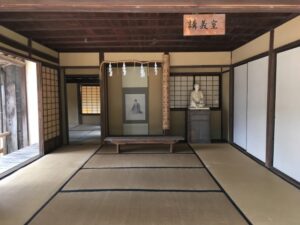
How was the school established?
Shokasonjuku was originally started by Shoin Yoshida’s uncle, Bunnoshin Tamaki, and Shoin Yoshida succeeded him.
When Shoin returned home from prison, Bunnoshin Tamaki had closed the Shokasonjuku, but Shoin began to give lectures to his family, which were well received.
Gradually more and more people attended, from relatives to young people in the neighborhood, and the school developed into a school.
The name “Shokasonjuku” just means “Matsumoto Village (of) School” from Matsumoto Village, where the school’s location, Shoin Yoshida’s house, was located.
Who was teacher at Shokasonjuku?
Although Shoin Yoshida is often thought to be the teacher at Shokasonjuku, he himself was not a teacher, but rather a student.
Of course, Shoin Yoshida gave lectures, but he also invited a fellow prisoner, Yurin Tominaga, who was good at calligraphy, as a teacher,
students also taught each other what they were good at and discussed with each other.
How much was the school fee?
Monthly fees (tuition fees) at Shokasonjuku were completely free.
On the contrary, a simple meal was sometimes provided by the Yoshida family.
Shoin, who loved discussions with young people, would often let them eat because the discussions would be interrupted if he had to leave after supper.
It seems that this happened often.
What are hours of operation?
It was open 24 hours a day.
Since Shoin Yoshida was at home (Shokasonjuku), young people could visit the school at any time they wanted, and Shoin Yoshida could give lectures and discussed with them.
How long have he been teaching?
Shoin Yoshida actually taught for only about “2 years and 10 months”.
The school was opened by Shoin’s uncle Bunnoshin Tamaki, who established the school, and his elder brother Umetaro Sugi, and was used as a place for study groups for the students, but Shoin Yoshida taught for only less than three years.
What was taught at Shokasonjuku?
One of Shoin’s best-known lectures was “Mencius (Mencius, a book compiled by his disciples from the current writings of a thinker in China’s Warring States period),” but the text was chosen by the students.
Shoin, who had read an enormous number of books, gave lectures on various books and held study groups with other students.
He was also said to have held study sessions with other students.
In other words, the content of what was taught was wide-ranging and could be said to have been general studies.
Later, many politicians were produced from Shokasonjuku, and it seems that Shoin’s educational policy became closer and closer to the education that produces politicians.
However, Shoin’s educational policy was to develop the strengths of each student, and Shoin’s advice to his students on their paths was different.
Students who studied at Shokasonjuku
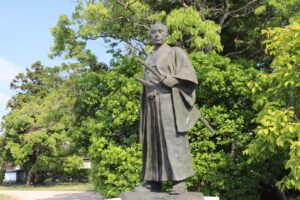
From Shokasonjuku, there are many people who were instrumental in achieving the Meiji Restoration or became active in politics after the Meiji government was formed.
The following is a list of representative figures.
Shinsaku Takasugi(高杉晋作)
He is well known as the founder of the Kiheitai, a group of military commanders who led a revolution within the Choshu domain, which had been leaning toward the shogunate (siding with the shogunate), and was instrumental in setting the course for the overthrow of the shogunate.
He was the person who set the course for the Meiji Restoration, the overthrow of the shogunate, which was accomplished by the Choshu and Satsuma domains.
Although he himself died of pneumonia, a chronic illness, at a young age, the Meiji Restoration might not have been possible without Shinsaku Takasugi.
He was a great man who inherited the revolutionary ideas created by Shoin Yoshida and changed Japan through his actions.
Genzui Kusaka(久坂玄瑞)
Shoin Yoshida praised him as a “peerless genius,” and he and Shinsaku Takasugi were called the “twin peaks of Shokasonjuku”.
Shoin cherished him so much that he gave his sister in marriage to him and raised her as his successor, and Genzui Kusaka himself worked hard as a leader of the young people of the Choshu domain after the death of Shoin.
It is said that Ryoma Sakamoto visited Choshu Hagi in 1862, met with Genzui Kusaka, and Genzui’s words inspired him to leave the domain.
Hirobumi Ito(伊藤博文)
The first Prime Minister of Japan.
He became a kind of younger brother of Shinsaku Takasugi, and together they stood up and achieved a revolution at the time of the Kozanji uprising.
After the Meiji Restoration, he became a politician and served as Prime Minister four times.
He drafted the Constitution of the Empire of Japan and laid the foundation of Japan’s modern constitutional society.
Aritomo Yamagata(山県有朋)
A politician and military officer, he held various ministerial positions in the Meiji government, including Prime Minister and General of the Army.
Although his tenure at Shokasonjuku was short, he said he was greatly influenced by Shoin Yoshida.
He belonged to the Kiheitai, which was created by Shinsaku Takasugi, and became the second-in-command of the Kiheitai, and at the time of the Kozanji Raid, he practically took control of the Kiheitai and supported Takasugi.
Yajiro Shinagawa(品川弥二郎)
He held a number of important political positions in the Meiji government.
He was loved by Shoin Yoshida and remained his loyal disciple until the end.
After Shoin’s death, he befriended Genzui Kusaka and participated in the Sonno Exclusionist movement led by Shinsaku Takasugi and others.
He was talented in military affairs and played an active role in the Boshin War.
Akiyoshi Yamada(山田顕義)
He entered Shokasonjuku at the young age of 14, and after the death of Shoin, he joined the movement of Kusaka and others for the exclusion of the Emperor and the expulsion of the barbarians, and participated in several wars starting with the Forbidden Gate Incident.
In the Meiji government, he served as Minister of Justice, and as Director of the Imperial Institute, he was involved in the founding of Kokugakuin University and Nihon University.
Place of Shokasonjuku
Is Shokasonjuku still in existence?
Shokasonjuku still exists today in Hagi, Yamaguchi Prefecture.
The place where Shokasonjuku is located is now known as “Shoin Shrine” where Shoin Yoshida is enshrined.
In 2015, it was registered as a World Heritage Site as one of the “Industrial Revolutionary Heritage of Meiji Japan”.
Adress:1537 Tsubaki-higashi, Hagi, Yamaguchi
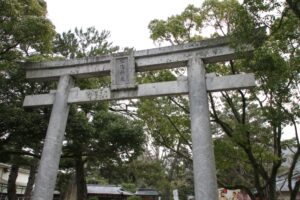
There is a replica of Shokasonjuku
There are actually many replicas of Shokasonjuku throughout Japan.
In addition, Shoin Shrine is also located in Setagaya-ku, Tokyo, where another replica of Shokasonjuku can be found.
This place, to our surprise, has a grave where Shoin Yoshida’s body was buried.
At that time, there was a villa of the Mori family(毛利家), the feudal lord of Choshu, in Setagaya Village, and Shoin’s body was buried in Kozukappara Ekoin, a tomb for criminals.
Shinsaku Takasugi and others dug up Shoin’s body and reburied it on the Setagaya Village grounds.
There is a special place in Tokyo where Shoin Sensei’s grave is located, and we encourage you to visit.
Adress:4-35-1 Wakabayashi, Setagaya-ku, Tokyo
Why did Shokasonjuku produce so many great people?
Why were so many politicians who achieved the Meiji Restoration and built Japan born from Shokasonjuku?
Shokasonjuku was just a private school of the Choshu domain
There were many schools in the period when Shokasonjuku existed.
There were domain schools, which were the official schools of the domains, as many Terakoya as there are convenience stores today, and there were also many private schools.
Among the private schools of the time, “Tekijuku” in Osaka, founded by Koan Ogata(緒方洪庵), was the most famous, and such greats as Yukichi Fukuzawa(福沢諭吉) and Masujiro Omura(大村益次郎) studied there.
However, Tekijuku was an elite school that attracted the best and brightest from all over the country, whereas Shokasonjuku was unique in that young people from the neighborhood gathered to study there.
It is a little unusual that so many great people were born there.
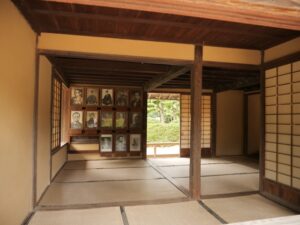
Shokasonjuku itself was given special treatment
One of the reasons why so many politicians emerged from Shokasonjuku was that those who had graduated from the school had formed a faction in collusion with each other.
Shoin Yoshida himself was deified, and I think this is one of the reasons why he was able to attain a considerable political position simply because he was a graduate of Shokasonjuku.
Influence of the teachings of the school
Even though those who graduated from the school were able to occupy special positions, it is probably too much to say that the school produced two prime ministers and four cabinet ministers in politics alone.
This is despite the fact that most of the people who had been regarded as highly competent at Shokasonjuku, such as Shinsaku Takasugi, Genzui Kusaka, Toshimaro Yoshida, and Kuichi Irie, died before the Meiji Restoration began.
The total number of students at Shokasonjuku is only about 92, yet so many people have left the school.
The actual teachings at the school are now a mystery to many, but what is interesting is that although many of them became politicians or died in wars, few became scholars or other people.
It is said that Yoshida Shoin Yoshida believed in “don’t be a scholar” and do it.
Since those who died in battle to change the world, as well as politicians, are people who try to change the world, I believe that Shoin’s way of thinking remained in the minds of the students as his teachings, and many people who are considered great men were born.
Attractiveness of Shoin Yoshida as a person
The Shokasonjuku was established in a small house on the edge of Honshu by a young man who was a criminal and was confined to his estate.
Therefore, unlike the famous schools in Edo and Osaka, it does not have a well-developed textbook or teaching curriculum.
Moreover, Shoin taught there for less than three years, so the educational content was probably not as good as at other famous schools.
In other words, it is not so much the content of the lectures at the school that was excellent, but rather the charm of the school’s organizer, Shoin Yoshida, that changed the young people.
Many of Shoin Yoshida’s thoughts and writings have survived, so we can read them even today, and they contain the crystallization of Shoin’s charm.
It teaches us the importance of learning about the life of a great man.
